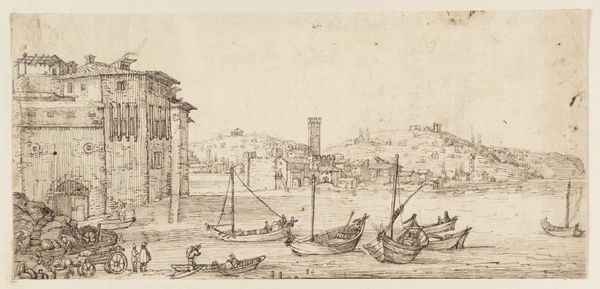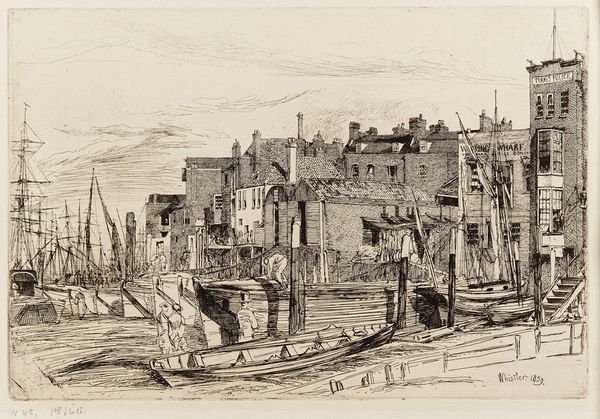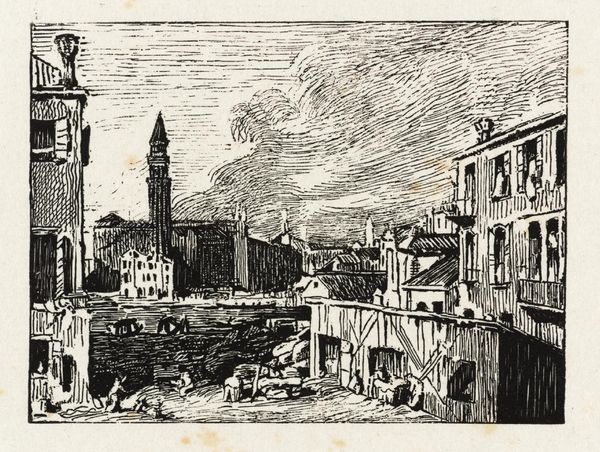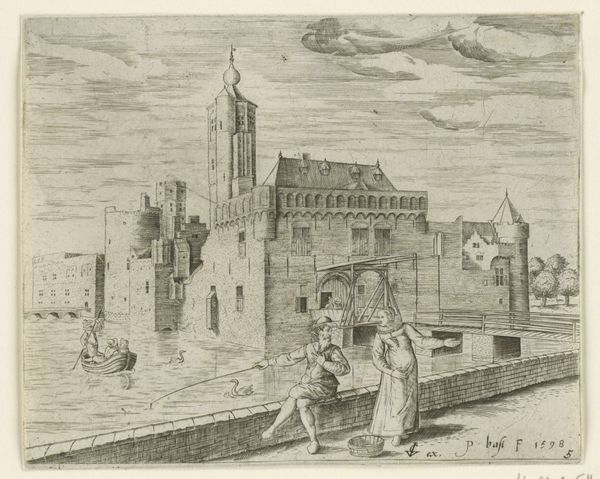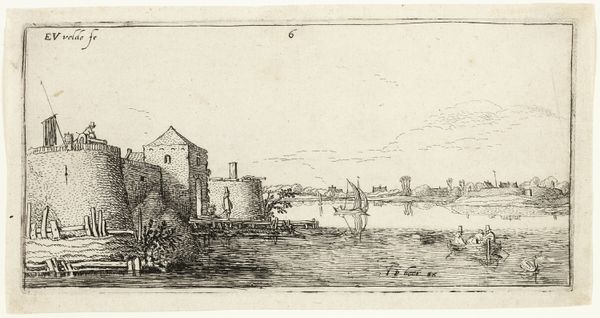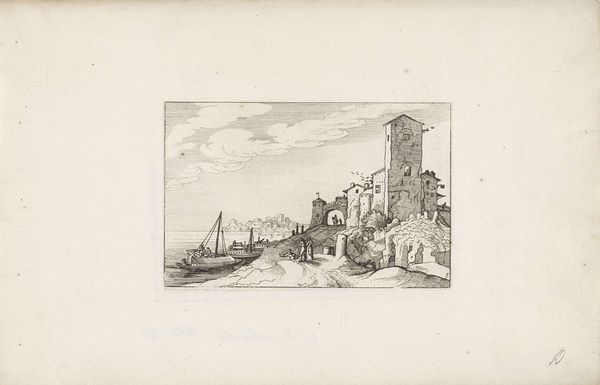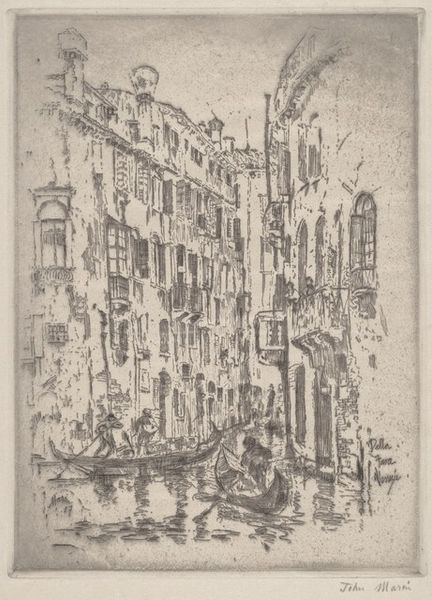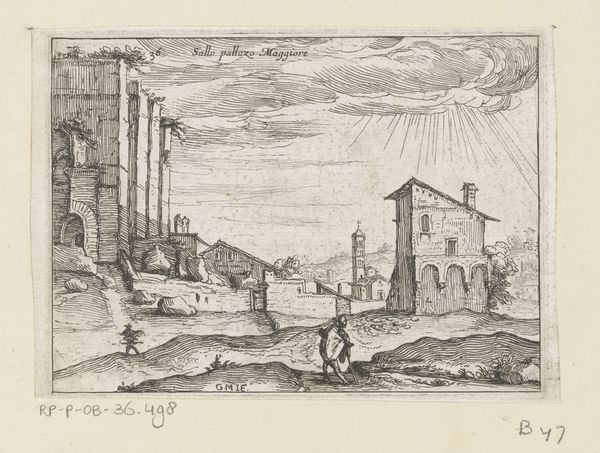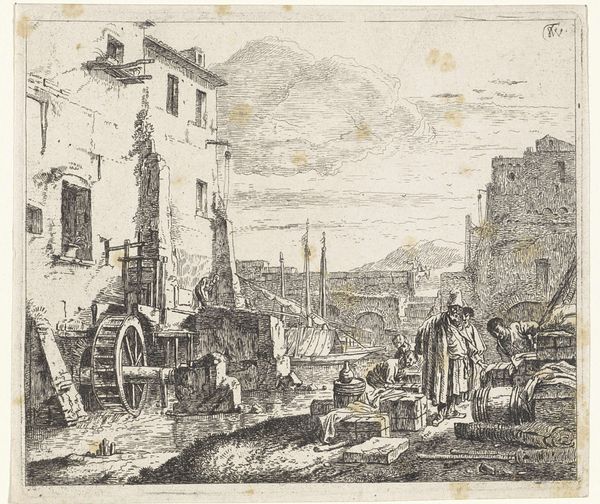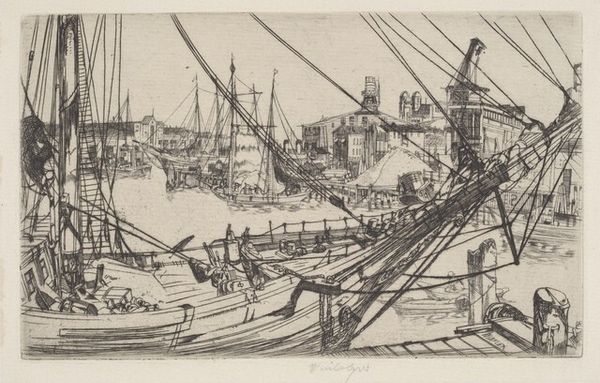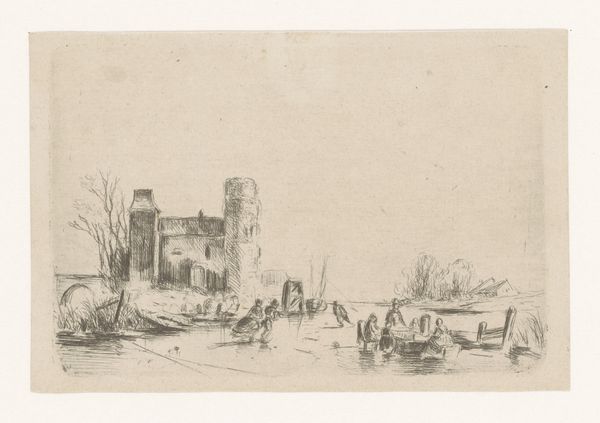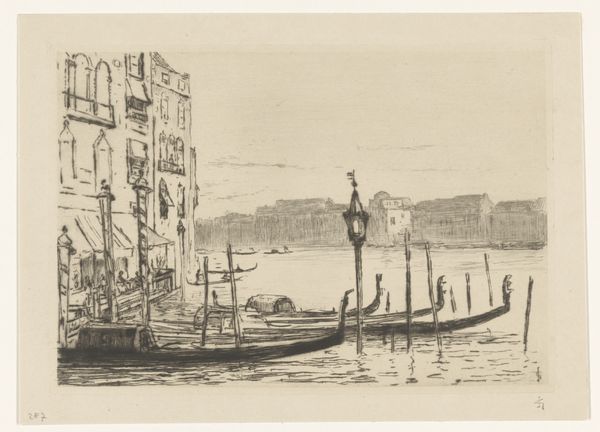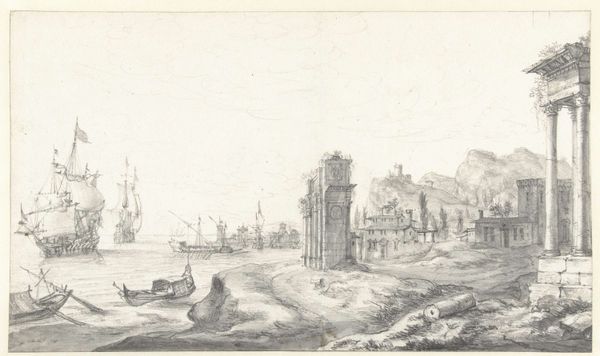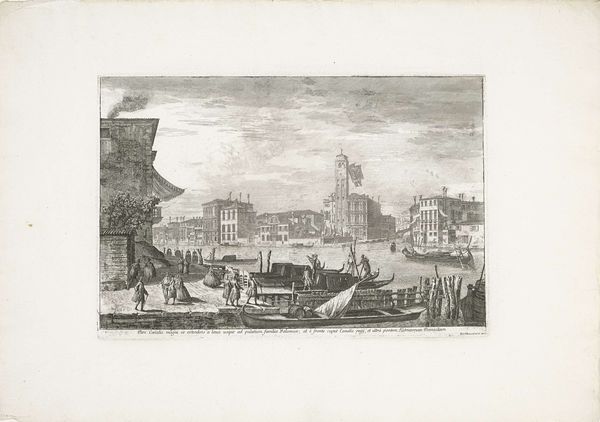
print, engraving
#
baroque
#
mechanical pen drawing
# print
#
pen sketch
#
sketch book
#
landscape
#
personal sketchbook
#
sketchwork
#
pen-ink sketch
#
line
#
pen work
#
sketchbook drawing
#
cityscape
#
storyboard and sketchbook work
#
sketchbook art
#
engraving
Dimensions: height 122 mm, width 181 mm
Copyright: Rijks Museum: Open Domain
Curator: This delicate engraving is titled "Roeiboot voor anker aan de kade van de haven van Messina" which translates to "Rowboat Anchored at the Quay of the Port of Messina," and it's attributed to Abraham Casembroot, likely dating from the mid-17th century. Editor: Immediately, I'm struck by the light; it feels as though the artist truly captured the brilliance of the coastal atmosphere despite rendering it in lines. Notice how he used only hatching to portray the forms. Curator: Casembroot, as a landscape artist of the Dutch Golden Age, often focused on topographical accuracy alongside aesthetic qualities. This print likely served a documentary purpose, depicting Messina’s bustling harbor, which was crucial for trade and naval power in the Mediterranean. We need to remember that harbor scenes, for instance, celebrated Dutch maritime prowess. Editor: Look at the foreground details - the precise linework defining the rigging of the anchored rowboat against the massive forms in the buildings gives the drawing so much visual depth. How the artist directs our gaze! I think this speaks to a certain confidence in their technical skill. Curator: Considering the period, the activity at the quay suggests Messina as a place of exchange. See those figures carrying burdens, likely engaging in the loading and unloading of goods, the ships in the distance coming and going. Casembroot may also have sought to illustrate the importance of labor and its direct contribution to city prosperity. Editor: I appreciate how he's handled the perspective of the architecture, giving you a very good sense of the port side structures without strictly obeying accurate rendering rules. The crumbling façade of the buildings also carries an immediate emotional weight, offering a somber quality to an otherwise straightforward portrayal of harbor activity. Curator: It's a fascinating study of the interrelationship between maritime activities and civic life during this period. It's about trade but also political power made possible by such vigorous activities at ports like Messina. Editor: I see that. This image becomes a document as much as a sketch—a confluence that renders it all the more rich for me. The formal construction supports such detailed sociocultural analysis.
Comments
No comments
Be the first to comment and join the conversation on the ultimate creative platform.
